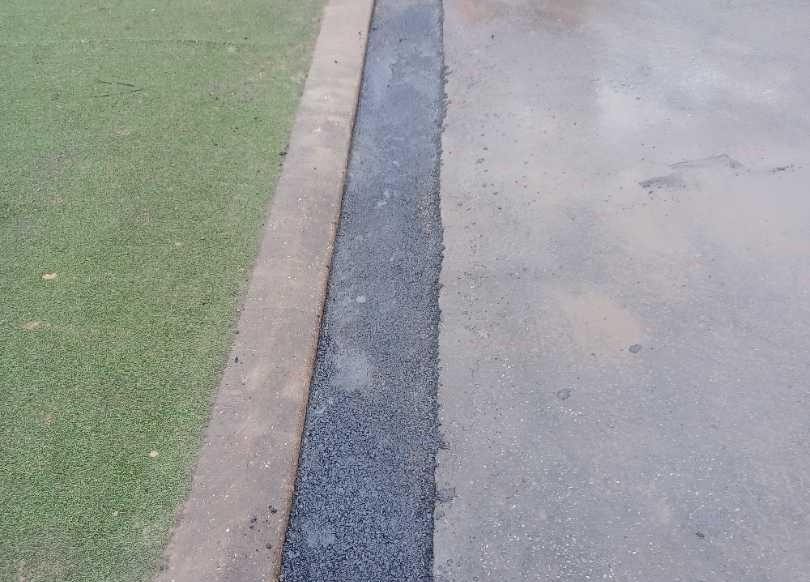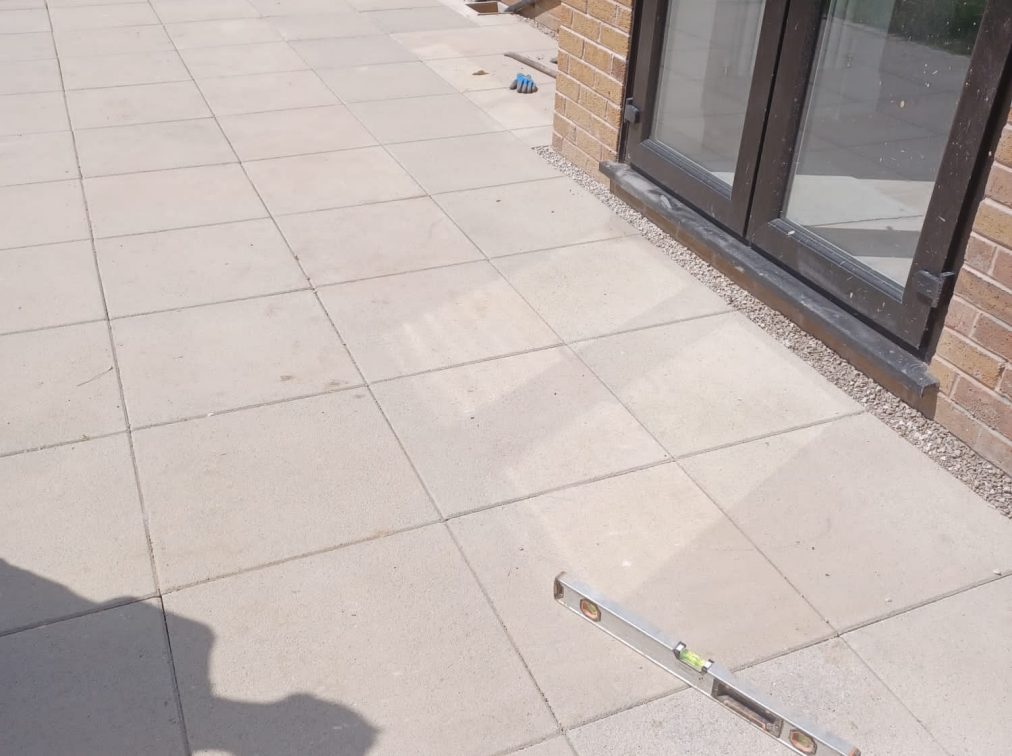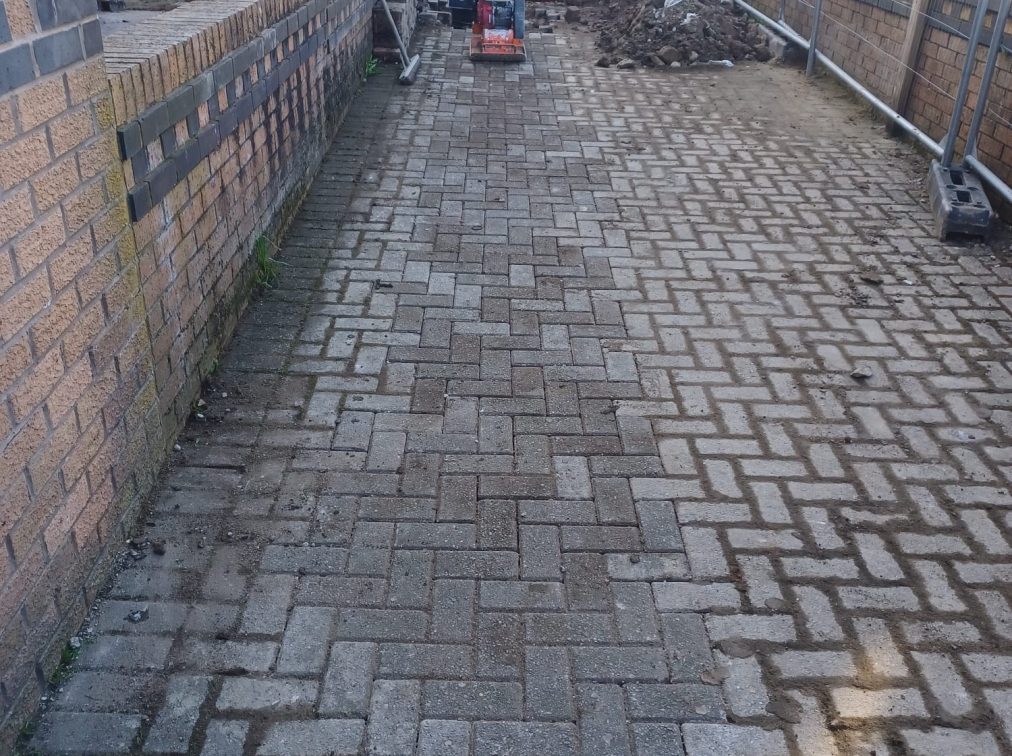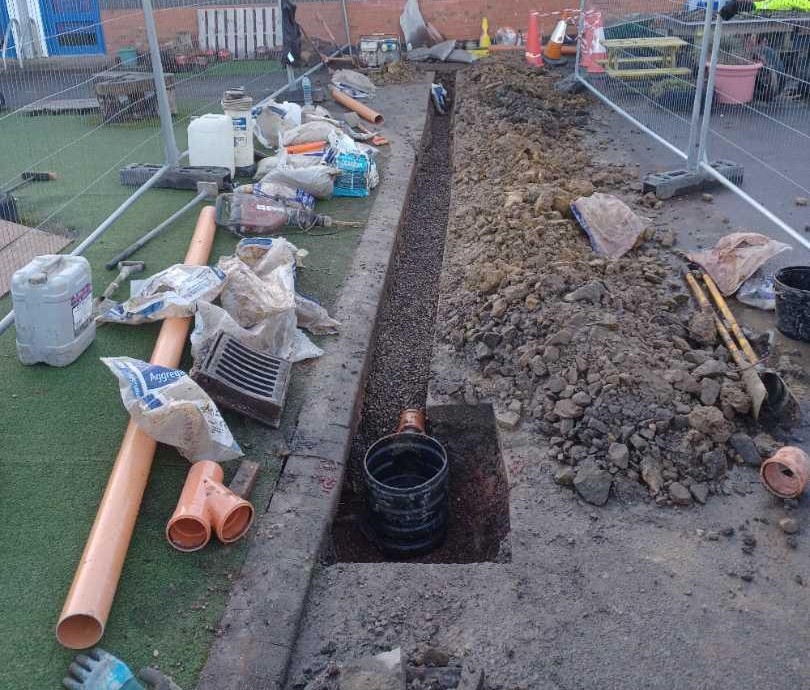Cold and Hot Lay Tarmac
Cold and hot lay tarmac reinstatement works are methods used to repair damaged or excavated road surfaces. Tarmac, also known as asphalt or bitumen, this is a durable and cost-effective material used widely in road construction.
Cold lay tarmac reinstatement works involve using pre-mixed bags or loose asphalt aggregate mixed with a bitumen emulsion or cold bitumen binder. This method is typically used for minor repairs or small areas because it requires minimal equipment and can be done by hand. The process generally involves cleaning and preparing the damaged area, filling it with the cold lay mixture, and compacting it using hand tools or a roller.
Hot lay tarmac reinstatement works, on the other hand, involve using heated asphalt binder mixed with aggregate. This method is generally used for larger repairs or complete resurfacing of roads. The process usually includes cleaning and preparing the damaged area, heating and mixing the asphalt binder in a specialized plant, transporting the hot mixture to the site, and applying it with equipment like pavers, rollers, or handheld mechanical rakes. The hot mix is then compacted to ensure a smooth and even road surface.
Both cold and hot lay tarmac reinstatement works have their advantages and considerations. Cold lay tarmac is often more convenient for small repairs as it allows for quick and easy application without the need for elaborate equipment. However, it may not be as durable or long-lasting as hot lay tarmac. Hot lay tarmac, on the other hand, provides a higher-quality and more robust road surface, but it requires specialized machinery and expertise for its application.
In both cases, it is important that the damaged area is properly prepared before applying the tarmac mixture to ensure adhesion and longevity. Adherence to safety guidelines, proper compaction, and appropriate curing time are also crucial for a successful reinstatement work.
Overall, cold and hot lay tarmac reinstatement works are essential techniques used in road maintenance and repair to ensure safe and smooth driving surfaces. The choice between the two methods depends on the scale of the repair, available resources, and the desired durability of the finished road surface.

Flag Stone
Flagstone reinstatement works refer to the process of repairing or replacing flagstone paving that has been damaged or deteriorated. Flagstones are flat, typically rectangular slabs of stone commonly used for paving walkways, driveways, patios, and other outdoor areas.
Flagstone reinstatement works may be necessary due to various reasons:
- Damage: Flagstones can be damaged by heavy traffic, extreme weather conditions, or accidental impact. Cracks, chips, or dislodged stones are common types of damage.
- Wear and tear: Over time, constant use and exposure to the elements can cause flagstones to wear down, become uneven, or lose their aesthetic appeal.
- Foundation issues: Any underlying issues with the base or foundation supporting the flagstones can lead to instability and the need for repairs or replacement.

To reinstate flagstones, the following steps are typically involved:
- Assessment: A thorough inspection is carried out to determine the extent of damage and identify any underlying issues.
- Removal: Damaged or deteriorated flagstones are carefully removed from the area using tools such as hammers, chisels, or jackhammers. This step ensures a clean surface for reinstallation.
- Base preparation: The underlying base or foundation of the flagstone area is examined and repaired if necessary. Compaction of the soil or installation of gravel or sand may be required to ensure stability and proper drainage.
- Replacement or repair: New flagstones are either installed to replace the damaged ones or the existing ones are repaired. This may involve cutting stones to fit specific areas, levelling the stones, and securely bedding them in mortar or sand.
- Finishing touches: Once the reinstatement is complete, additional steps may be taken to enhance the appearance and longevity of the flagstone. These can include sealing the stones to protect against staining or installing edge restraints to prevent movement.
Flagstone reinstatement works require expertise in working with stone materials, knowledge of proper installation techniques, and attention to detail. Hiring a professional contractor experienced in flagstone works is advisable to ensure a high-quality and long-lasting result.
Block Paving
Block paving reinstatement works refer to the process of repairing or replacing damaged or missing blocks in a block-paved area. Block paving is a popular choice for driveways and patios due to its durability. However, over time, the individual blocks may become dislodged, cracked, or damaged due to various factors like heavy traffic, extreme weather conditions, or poor installation.

When reinstating block paving, several steps are typically followed:
- Assessment: The damaged area is inspected to determine the extent of the damage and the required repairs.
- Preparation: The damaged blocks are removed carefully without causing further damage to surrounding blocks. The base, sub-base, and underlying layers are also examined for any issues, such as poor drainage or underlying ground movement. If necessary, they are repaired or reconstructed to ensure a stable foundation for the new blocks.
- Sourcing materials: Depending on the availability and compatibility, new blocks are selected to match the existing ones in terms of size, colour, and texture.
- Installation: The new blocks are laid in the damaged area, following the established pattern or design. They are properly aligned, levelled, and compacted to ensure a smooth and even surface.
- Jointing: Once the blocks are in place, jointing sand is spread and brushed into the gaps between the blocks. This helps to stabilize the blocks, prevent weed growth, and enhance the visual appearance of the paved area.
- Compaction: The entire reinstated area is compacted using a vibrating plate compactor. This helps to further stabilize the blocks and ensure a solid and durable surface.
- Cleaning: Any excess sand or debris is cleared away, and the paved area is thoroughly cleaned to remove any stains or marks.
- Sealing (optional): Depending on personal preference or additional protection requirements, a sealant may be applied to the block paving surface to enhance its durability, prevent weed growth, and provide resistance against stains and fading.
Block paving reinstatement works are typically carried out by professional contractors or skilled laborers with experience in block paving installation and repair. They ensure that the repaired area blends seamlessly with the existing block paving and restores its original functionality and appearance.

Talk to your local Metro Rod specialist
We are always happy to arrange a free site assessment and no obligation quotations for any work you might need. Alternatively, you can call our emergency hotline number on 0800 66 88 00
Get in touch Drainage Services

